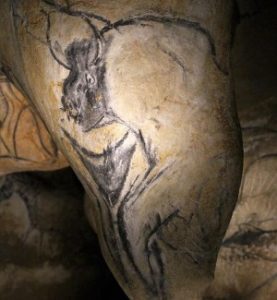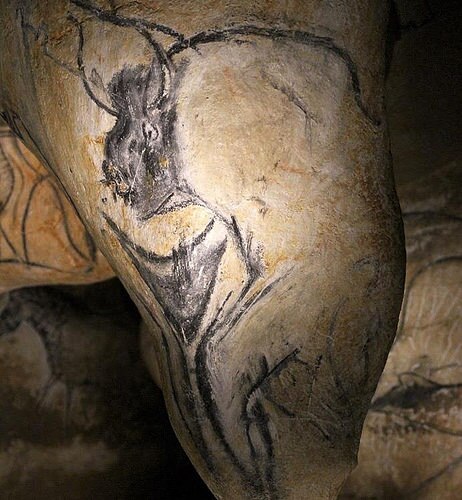
Three bison populations colonized Western Europe via three successive waves, the first between 57,000 and 34,000 years ago when the climate was temperate. During the glaciation period, this first population of ancient wisent was replaced by the steppe bison, the ancestor of the present-day American bison. As shown in paintings from the French Chauvet Cave, both of these two bison types were present in Southern France between 39,000 and 34,000 years ago. When the climate became mild again 14,000 ago, a new wisent population coming from the Southern Caucasus colonized Western Europe. This paleogenomic study* was performed by scientists from the Institut Jacques Monod (CNRS/University Paris Diderot)1 on ca. sixty samples that have been collected by a collaborative international network and whose dates cover the last 50,000 years. The results obtained show that the genetic diversity of bison gradually decreased until their disappearance in the wild in 19182. The study indicates that climatic and environmental changes and human pressure play a major role on the population dynamics of the megafauna, of which the wisent is the biggest representative still alive in Europe.
___________________________________
Bison painting in the Chauvet Cave, France. Claude Valette, Wikimedia Commons
___________________________________________
Source: CNRS press release
_______________________________________________
1 Particularly in collaboration with Jean-Philippe Brugal at laboratory Afrique au Sud du Sahara (CNRS/Ministère des Affaires étrangères) and at Laboratoire méditerranéen de préhistoire Europe-Afrique (CNRS/Aix-Marseille Université/Ministère de Culture et de la Communication) and Malgorzata Tokarska at Mammal Research Institute Polish Academy of Science in Poland.
2 A herd of wild wisent has been reconstituted in Poland from zoo animals.
*Past climate changes, population dynamics and the origin of Bison in Europe. Diyendo Massilani, Silvia Guimaraes, Jean-Philip Brugal, E. Andrew Bennett, Malgorzata Tokarska, Rose-Marie Arbogast, Gennady Baryshnikov, Gennady Boeskorov, Jean-Christophe Castel, Sergey Davydov, Stéphane Madelaine, Olivier Putelat, Natalia N. Spasskaya, Hans-Peter Uerpmann, Thierry Grange, Eva-Maria Geigl. BMC Biology, le 21 octobre 2016. DOI : 10.1186/s12915-016-0317-7. https://bmcbiol.biomedcentral.com/articles/10.1186/s12915-016-0317-7
______________________________________________

______________________________________________
Travel and learn with Far Horizons.
____________________________________________
This richly illustrated issue includes the following stories: Recent findings shedding new light on the whereabouts of the remains of Philip of Macedon, father of Alexander the Great; how an archaeologist-sculptor is bringing bones of the dead back to life; archaeologists uncovering town life at the dawn of civilization; an exclusive interview with internationally acclaimed archaeologist James M. Adovasio about what makes the Meadowcroft Rockshelter prominent in the ongoing search for the first Americans; what archaeologists are finding at the site of the ancient city of Gath, the home town of the biblical Philistine giant, Goliath; and how scientists are redrawing the picture of human evolution in Europe. Find it on Amazon.com.







